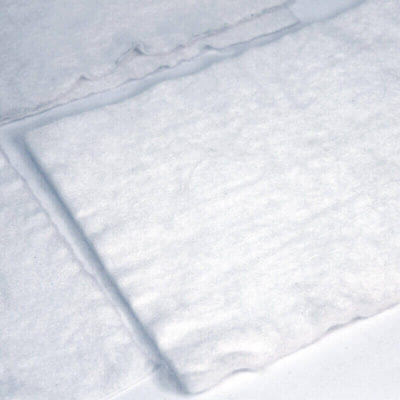
# Non Woven Geotextile Fabric: Applications and Benefits in Civil Engineering
Non woven geotextile fabric has become an indispensable material in modern civil engineering projects. This versatile synthetic material offers a wide range of applications and benefits that contribute to the durability, stability, and cost-effectiveness of construction projects.
## What is Non Woven Geotextile Fabric?
Non woven geotextile fabric is a permeable textile material made from synthetic fibers, typically polypropylene or polyester. Unlike woven geotextiles, non woven fabrics are manufactured by bonding fibers together through mechanical, thermal, or chemical processes. This manufacturing method creates a fabric with unique properties that make it ideal for various civil engineering applications.
## Key Applications in Civil Engineering
### 1. Soil Stabilization and Reinforcement
Non woven geotextile fabric is extensively used for soil stabilization in road construction, embankments, and slopes. It helps distribute loads evenly and prevents soil mixing, which can lead to structural instability.
### 2. Drainage Systems
The fabric’s permeability makes it an excellent choice for drainage applications. It allows water to pass through while preventing soil particles from clogging drainage systems, ensuring proper water flow and preventing waterlogging.
### 3. Erosion Control
In areas prone to soil erosion, non woven geotextile fabric acts as a protective barrier. It stabilizes soil particles while allowing vegetation to grow through, creating a natural erosion control system.
### 4. Separation of Soil Layers
The fabric is commonly used to separate different soil layers in construction projects. This prevents the mixing of materials, maintaining the integrity and performance of each layer.
## Benefits of Using Non Woven Geotextile Fabric
### 1. Cost-Effectiveness
By reducing the need for traditional construction materials and extending the lifespan of structures, non woven geotextile fabric can significantly lower project costs.
### 2. Durability
The synthetic fibers used in non woven geotextile fabric are resistant to biological degradation, chemicals, and UV radiation, ensuring long-term performance.
### 3. Versatility
Its wide range of applications makes it a valuable material for various civil engineering projects, from small-scale constructions to large infrastructure developments.
### 4. Environmental Friendliness
Non woven geotextile fabric helps reduce the environmental impact of construction projects by minimizing soil erosion and promoting sustainable construction practices.
## Installation Considerations
Proper installation is crucial for maximizing the benefits of non woven geotextile fabric. Key considerations include:
– Surface preparation
– Proper overlap of fabric sheets
– Adequate anchoring
– Protection from UV exposure before covering
## Future Trends in Geotextile Technology
As civil engineering continues to evolve, so does geotextile technology. Future developments may include:
– Smart geotextiles with embedded sensors
– Biodegradable options for temporary applications
– Enhanced strength-to-weight ratios
– Improved resistance to extreme environmental conditions
Non woven geotextile fabric has revolutionized the field of civil engineering, offering innovative solutions to traditional construction challenges. Its versatility, durability, and cost-effectiveness make it an essential material for modern infrastructure projects. As technology advances, we can expect to see even more innovative applications of this remarkable material in the construction industry.
Keyword: non woven geotextile fabric

Comments are closed